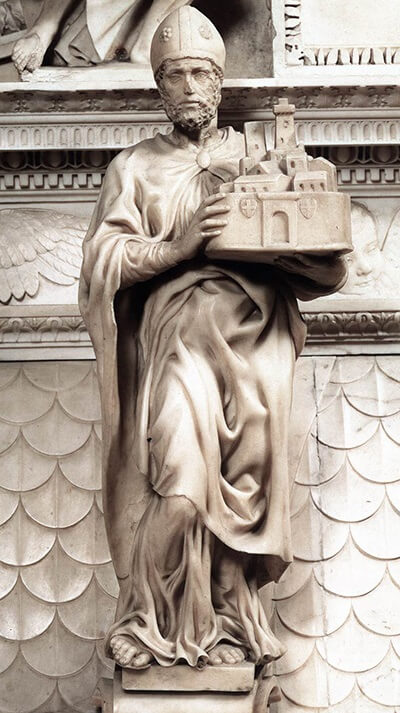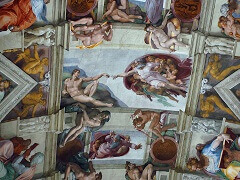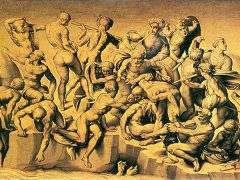St Petronius, by Michelangelo

Attribution to Michelangelo of the Saint Petronius is supported by 16th-century sources, but it includes Fra Ludovico da Prelormo's suggestion that the young Florentine had made "almost" all of it. The use of this particular word would support the hypothesis that Niccolo dell'Area had already begun to carve the block of marble; it has been interpreted by others as an invitation to consider the head not an autograph, but something that was replaced by a later sculptor instead.
No doubt what is particularly impressive about the statuette of Bologna's patron saint is the body wrapped in drapery revealing the influence of "morphological Ferrarese rage": Michelangelo surely had a chance to see, right in Bologna, the work of Tura and Cossa, the adamantine hardness of their painting style, just as he must inevitably have observed Jacopo della Quercia's Saint Petronius in the high lunette of the cathedral in the square. Under the drapery comprising loops, swirls and cascades is the ponderated and apparently static pose, traversed, however, by the trembling of physical effort to hold, with his hip as well as his hands, the taut tendons clearly visible, the compact and, of course, heavy model of the protected city.
As for the head, compatible with the idea of a Michelangelesque execution is the virile and harmonious facial type, as well as the intense, severe expression. And although it may suffer from the predominance of graphic elements that banalize the lineaments and impoverish the volumes, the idea that it may have been reworked at a later date to repair the damaged parts, cannot be excluded. For now, as neither close examination nor ad hoc testing (for instance, petrographic study of the marble in various parts of the statue) have been carried out, the question of whether the work is a total or partial autograph cannot be solved by statistical analysis alone.
















